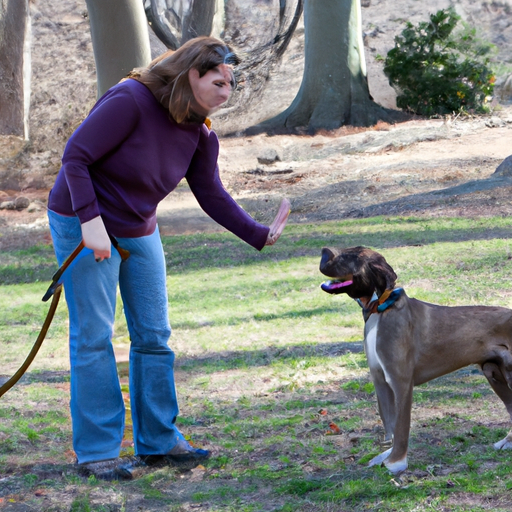Understanding Your Dog’s Reactivity
Your role as a caregiver extends to the furry members of your family, too. Just like humans, dogs have their own personalities, quirks, and anxieties. Reactive dogs are not “bad,” they’re just misunderstood. These dogs often struggle with fear, frustration, or excitement, leading them to bark, lunge, or growl in response to certain stimuli.
Before you can begin training, it’s crucial to understand your dog’s triggers. Is it other dogs, strangers, cars, or something else entirely? By identifying these triggers, you can create a plan tailored to your dog’s needs.
Creating a Positive Environment
Creating a safe and positive environment is key to training reactive dogs. This involves two main steps:
-
Removing Stressors: Remove your dog from situations that cause them stress as much as possible. This might mean changing your walking route or time to avoid triggers.
-
Creating Positive Associations: Introduce positive stimuli when your dog encounters their triggers. This could be a favorite toy, treat, or praise. The goal is to help your dog associate their triggers with positive experiences rather than fear or frustration.
Training Techniques for Reactive Dogs
There are several techniques you can use to train your reactive dog. Here are some of the most effective ones:
-
Desensitization: Gradually expose your dog to their triggers at a distance that doesn’t provoke a reaction. Over time, slowly decrease this distance.
-
Counterconditioning: Change your dog’s emotional response to their triggers. This can be done by introducing positive stimuli, as mentioned earlier.
-
BAT (Behavior Adjustment Training): This technique involves allowing your dog to move away from their triggers as a reward for calm behavior.
Remember, patience is key. Progress might be slow, but any improvement is a step in the right direction.
Seeking Professional Help
If your dog’s reactivity is severe or causing significant stress, it might be time to seek help from a professional. Dog trainers and behaviorists can provide personalized training plans and support.
| Type of Professional | Service Provided |
|---|---|
| Dog Trainer | Basic obedience training, behavior modification |
| Certified Applied Animal Behaviorist | Behavior modification, managing severe reactivity |
| Veterinary Behaviorist | Behavior modification, can prescribe medication if needed |
Maintaining Progress
Once you start seeing improvements, it’s important to maintain this progress. Continue with regular training sessions, even if your dog seems to be coping better. Remember, setbacks are part of the journey. Celebrate the small victories and keep persevering.
Frequently Asked Questions
Q: How long will it take to train my reactive dog?
A: It depends on the dog and the severity of their reactivity. Some dogs might show improvement within a few weeks, while others might take months or even years.
Q: Can all reactive dogs be trained?
A: While most reactive dogs can be trained to manage their reactions better, some might always struggle with certain triggers. The goal of training is not to “cure” reactivity, but to help your dog cope better.
Q: When should I seek professional help?
A: If your dog’s reactivity is causing significant stress, or if you’re not seeing any improvement after several weeks of training, it might be time to seek professional help.



